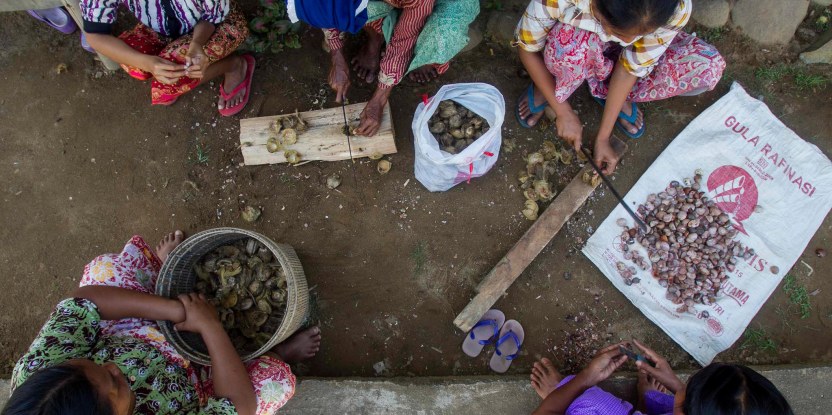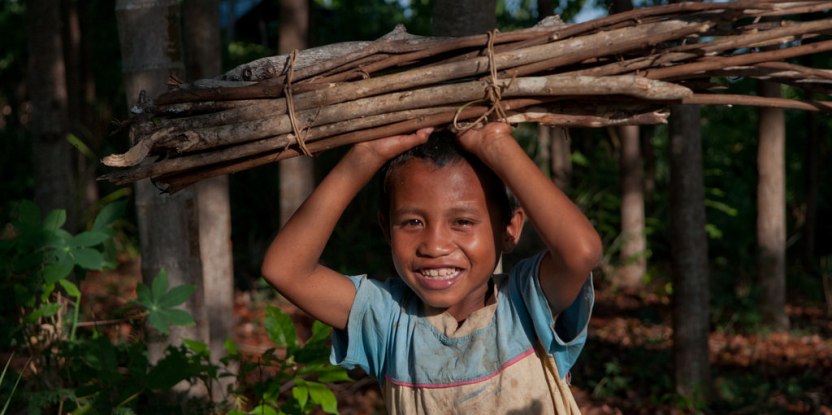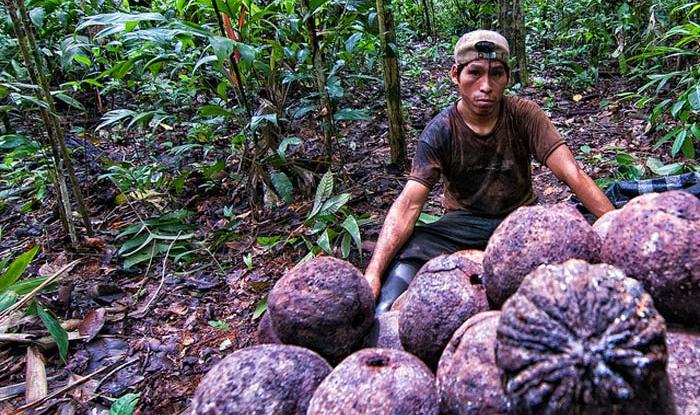BOGOR, Indonesia—A tropical forest: A habitat for wildlife, untouched by humans? Or trees ripe to be cleared for profit?
Or is the forest an integral part of a human landscape: relied on by people for clean water, timber, forest foods, wood fuel, a haven for animals and plants, and a carbon sink for the health of the climate system?
Forestry experts argue that this last picture is closest to the true nature of forests – and this is how we must think of them if, as a global community, we are to achieve the new UN Sustainable Development Goals and tackle climate change.
Forests are not just something ‘nice to have’ but an integral part of what sustainable development means in the tropics, according to Louis Verchot, Director of Forests and Environment Research at the Center for International Forestry Research (CIFOR).
A recent CIFOR study involving 8,000 households from 24 developing countries found that income from natural forests and other environmental sources accounts for 28 percent of total household income – nearly as much as agricultural crops.
“There are people who live in the forests; there are people who depend upon these forests. Their concerns need to be addressed,” Verchot said. “We actually need to find ways to use them sustainably, and so we need to put in place the economic development models that allow us to do that.”
This year, two major global processes will recommend future action. Forests need to be part of the plans, according to Verchot.
In September in New York, the UN will finalize a set of Sustainable Development Goals (SDGs) designed to provide a pathway for all countries to a future that is economically, socially, and environmentally sustainable.
And in Paris in December, countries will negotiate a new global climate agreement to replace the Kyoto Protocol.
This means signatory countries will need to take both sustainability and climate change into account when they plan future development, and create plans of action to address the goals set out under these new agreements.
SLOWING CLIMATE CHANGE
Brazil has shown just what’s achievable through smart and holistic policy making, in one of the few success stories in global climate change mitigation.
While most countries’ carbon emissions continue to grow, Brazil has slashed its emissions by around 40 percent from what they were in 1990. A concerted, national effort to tackle deforestation was the reason.
In the early 2000s, Brazil’s deforestation hit an all-time high. In 2004, the incoming government introduced a set of policy measures across 13 ministries to crack down on illegal deforestation and create protected areas.
Between 2004 and 2012, Brazil reduced the deforestation rate in the Amazon by 76 percent.
While recent reports suggest Amazon deforestation is creeping up again, and in other sectors Brazil’s emissions are growing, it is an effort that makes Brazil the single largest contributor to climate change mitigation.
GROWING SUSTAINABLE DEVELOPMENT
However, forests’ importance goes far beyond their role in keeping the climate stable.
“If you’re concerned about clean water, forests do a lot to keep sediment out of surface waters, and they replenish aquifers that are essential for agriculture,” Verchot said.
“If you want to control pests in crops, mosaic landscapes are better at ensuring natural pest control than having landscapes made up of large monocultures, otherwise you have to use a lot more pesticides.”
Verchot said that in Africa, the forests provide emergency food sources during times of hunger, whether is edible tubers foraged during droughts in the Sahel or bushmeat providing nutrition in the Congo Basin.
And if you’re trying to improve human health, ensuring a sustainable supply of fuel wood and cleaner cooking technologies in poorer countries with limited electricity or access to gas means people won’t resort to using dung for fuel and open fires for cooking – and risk respiratory and other diseases as a result, Verchot said.
Part of the solution is decriminalizing and regulating charcoal production. “In many countries in Africa making charcoal is an illegal activity – yet even the responsible minister will often cook his meat on the weekend with charcoal,” he said.
Recognizing the widespread use of wood fuel, and its important contribution to development, while ensuring supply to meet people’s needs is exactly the kind of policy making the SDGs should encourage, according to Verchot.
“It’s about shifting from wild harvesting, to planning to have wood resources in particular places in the landscape, and ensuring these are managed so that harvesting doesn’t exceed the growth, and there is a sustained adequate supply over the coming decades for people so they don’t have to shift to less clean fuels.”
These links between energy, health, and livelihoods are not explicit in the draft form of the SDGs.
Of the 17 goals, one deals with hunger and sustainable agriculture and one urges action on climate change. Forests get a brief mention in connection with water, and in Goal 15: “Protect, restore and promote sustainable use of terrestrial ecosystems.”
For Cheryl Palm, a Senior Research Scientist and Director of Research at the Agriculture and Food Security Center, Columbia University, that represents a missed opportunity.
“The future of forests and natural ecosystems depends on what happens in agriculture, as we try to feed more and more people with changing diets requiring more food, more land area – so there has to be a dialogue,” she said.
“And if we’re not doing that through the SDGs, then I don’t see a universal platform for a global discussion about it.”
Specific indicators within each goal will measure countries’ progress towards the SDGs – and it may be that the indicators will be outlined more explicitly after the SDGs are finalized in September.
But if not, policy makers still need to consider forests across their development agenda, Verchot said.
“Just because forests are taken care of at number 15 doesn’t mean you don’t ever have to think about them again,” he said.
“Forests are integral to achieving a number of these objectives, whether it’s poverty reduction or access to clean water supplies or maintaining agricultural productivity. So in their planning, countries can’t just think about forests in isolation, they have to think how to meet these goals in multifunctional landscapes.”
That’s not easy, he said, but it’s possible, as Brazil’s example shows – and science is there to help.
“Policy makers can look towards the evidence that is available and make decisions based on that evidence,” he said.
“Science can help countries make informed political choices about the trade-offs, and there is an international and national scientific community that’s ready to support them with information and analysis to help them make the best decisions possible.”
CIFOR’s research on forests, climate change and sustainability forms part of the CGIAR Research Program on Forests, Trees and Agroforestry.
We want you to share Forests News content, which is licensed under Creative Commons Attribution-NonCommercial-ShareAlike 4.0 International (CC BY-NC-SA 4.0). This means you are free to redistribute our material for non-commercial purposes. All we ask is that you give Forests News appropriate credit and link to the original Forests News content, indicate if changes were made, and distribute your contributions under the same Creative Commons license. You must notify Forests News if you repost, reprint or reuse our materials by contacting forestsnews@cifor-icraf.org.



